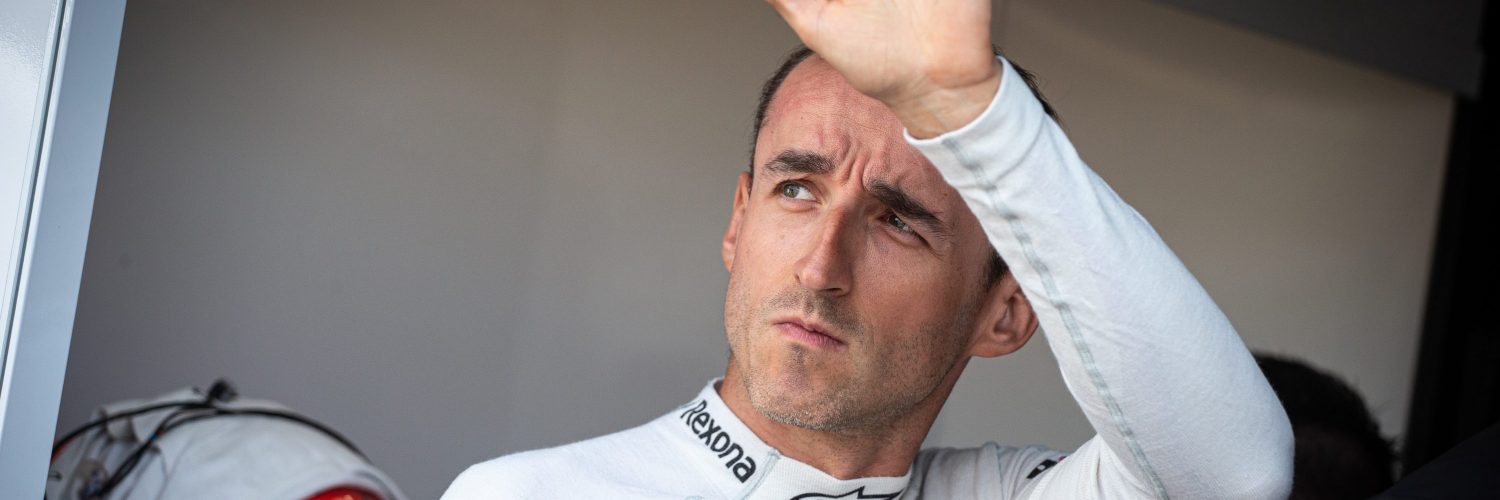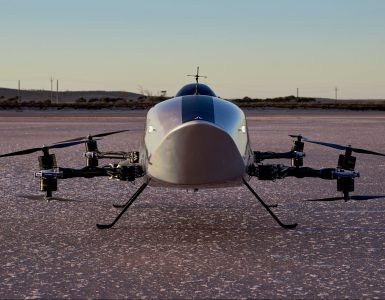It was with some sense of sadness that the Formula One community was greeted with the news in Singapore that Robert Kubica would be leaving the Williams F1 team at the end of the season to pursue other opportunities.
A grand prix winner with BMW Sauber in 2008, the popular Pole was destined for F1 stardom and touted as a future world champion, had fate not cruelly intervened and a Rally accident during the Ronde di Andora left him with life-threatening injuries.
Merely to get back behind the wheel of an F1 car and compete at the top table of the pinnacle of motorsport once again represents a huge achievement and it is to his credit that he chooses to leave the F1 arena on his own terms.
Of course, the injuries sustained has meant that Williams and Kubica have had to come up with some innovative technical adjustments to help compete at the top level again. Here, Motorsport Tech’s Craig Scarborough uncovers just how that has been made possible.
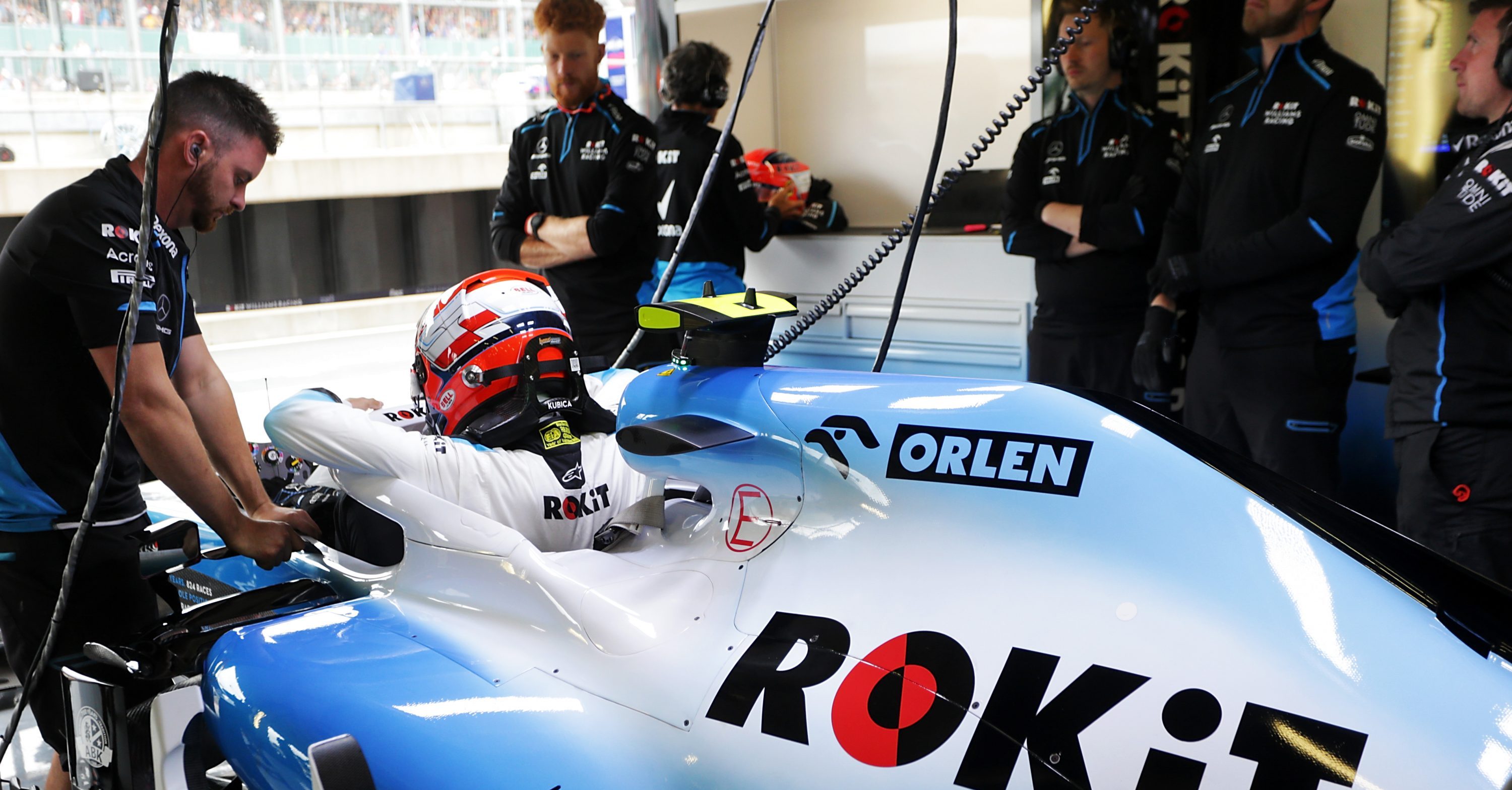
F1 – Williams Steering Wheel Revisions
Naturally, every racing driver prefers their own cockpit layout, and in contemporary F1 this particularly includes the steering wheel set up. This becomes an intensely personal tool, allowing the driver access to their preferred control functions, via the steering wheel’s myriad of buttons, rotaries and paddles. For Kubica, this customisation goes further than for most drivers, due to the result of the injuries he received in his Rally crash in 2011. For the Polish driver, this affects the mobility of his right arm and thus the steering wheel on his FW42 has evolved accordingly through the year, giving the driver more comfortable access to the important buttons and better grip of the wheel through corners.
Base specification
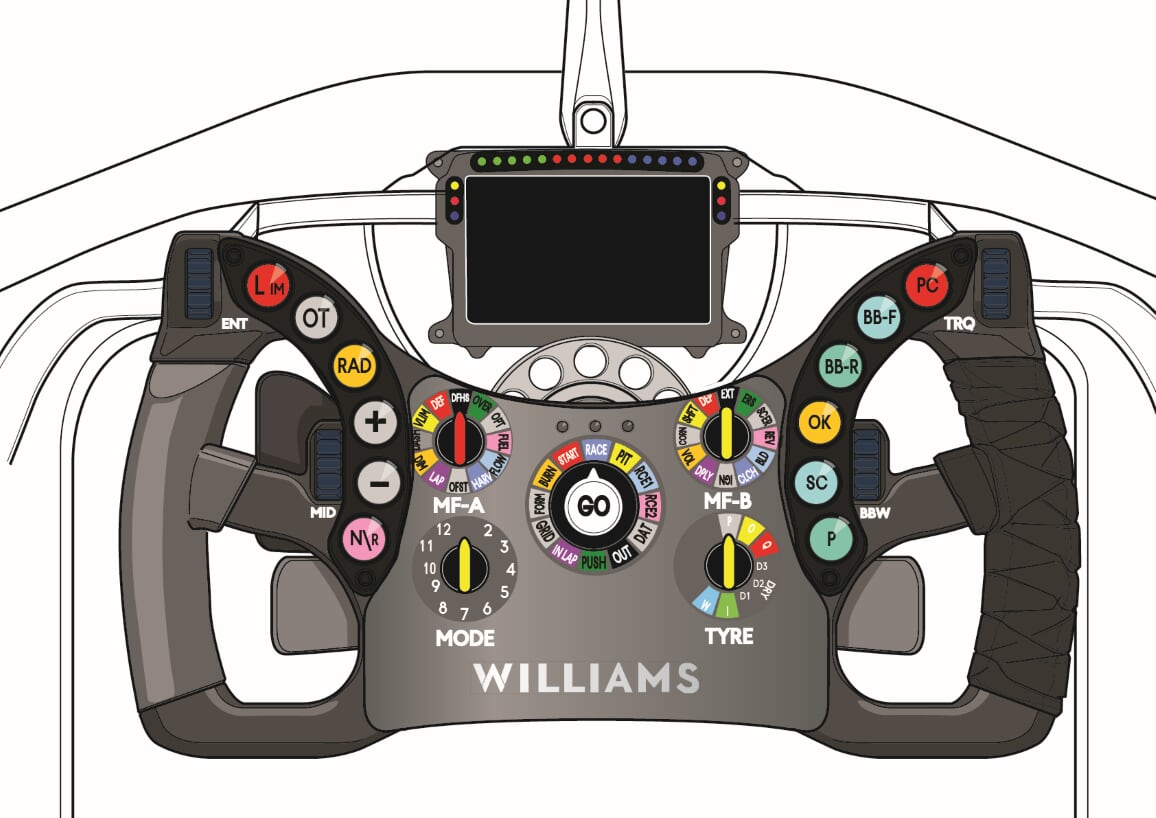
To date, Kubica has raced two specifications of steering wheel. For Williams, this is one of three specifications they have prepared, as one more conventional spec of wheel is run by George Russell. Their standard specification is largely a carry-over design from recent years, the team adopting a unique butterfly shape wheel, with the FIA specification dash being mounted to the chassis and not incorporated into the steering wheel, as on every other team’s cars. Dating back to 2014, the split wheel\dash set up has been attributed to both ease of reading of the dash display by the driver, purely because it doesn’t rotate with steering. But it’s also to reduce inertia on the steering column, despite the McLaren supplied dash unit weighing just 250g with its cabling.
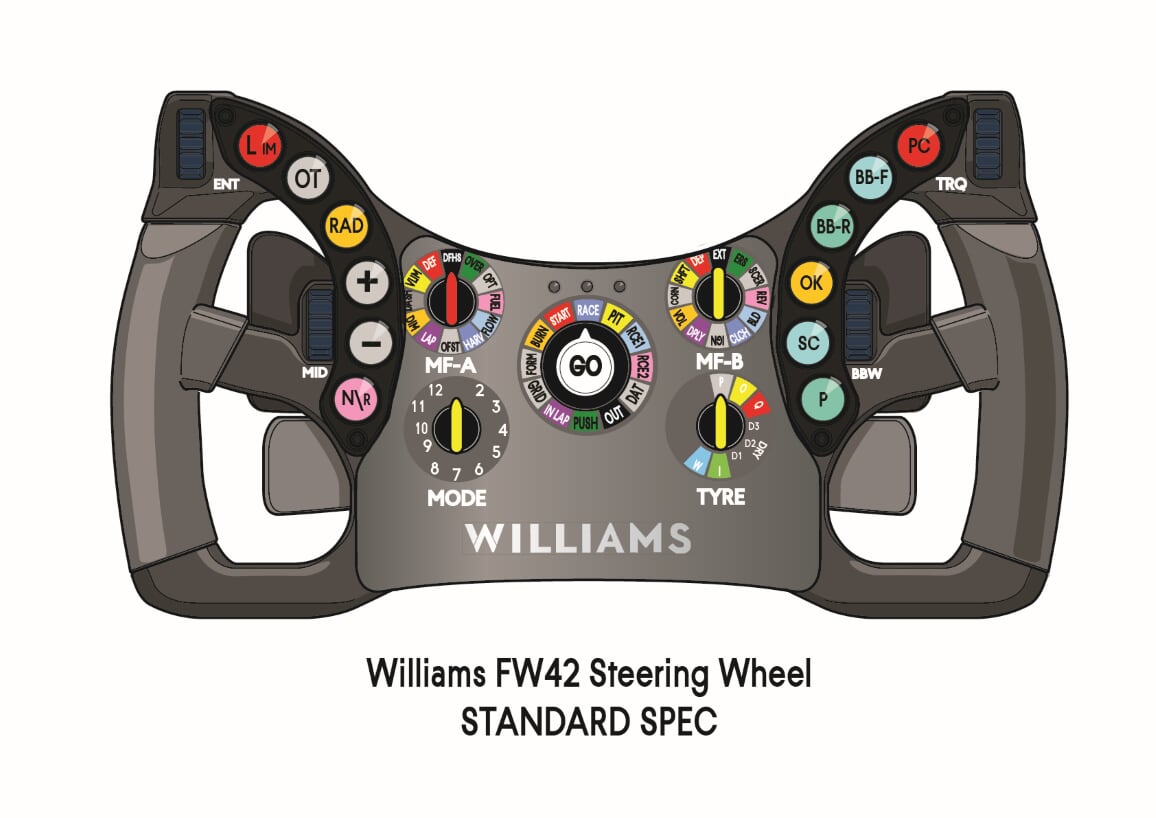
On its front face, the base specification steering wheel features two pairs six buttons, arranged in an arc for easy operation by the driver’s thumb. The thumb also operates four rotaries switches on the spokes of the wheel, with a further five rotary switches placed on a removable panel in the middle of the wheel. This set up is quite normal for F1 steering wheels, but of course the choice of function allocated to each button or rotary is customised to suit each driver. Each side of the wheel has an oversized rubber grip moulded around the perimeter for the driver to grasp.
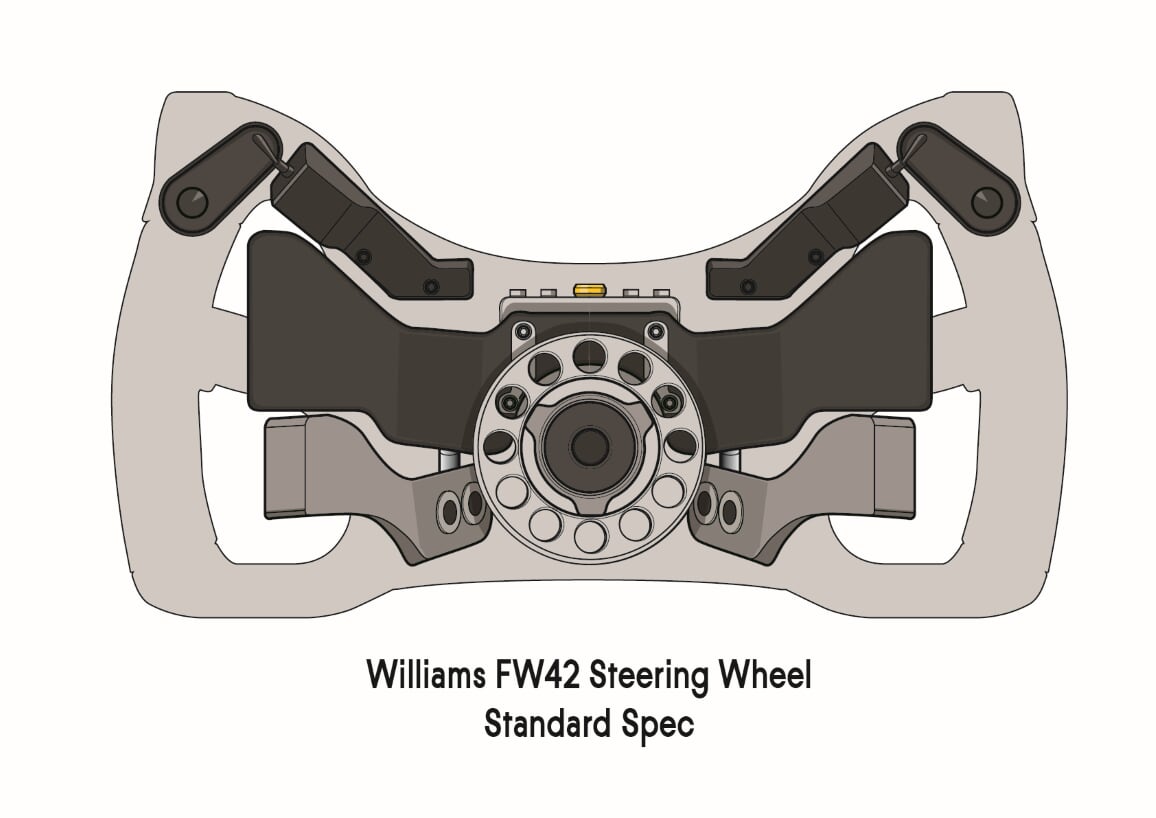
Behind the wheel, aside from the usual quick release coupling to allow the driver rapid exit from the cockpit, there are two clutch paddles each with their own rotary sensor and pair of gear shift paddles. They operate on a rocker principle, with a common sensor set up, allowing the driver to push or pull each paddle to upshift or downshift. Often, unseen from the onboard camera angle, there are two pairs of additional switches behind the wheel, with toggle switches mounted to a pod bolted to the wheel and another push button switch set into the wheel itself to be operated by the driver fore finger, bringing the button count up to 16!
Kubica’s revisions
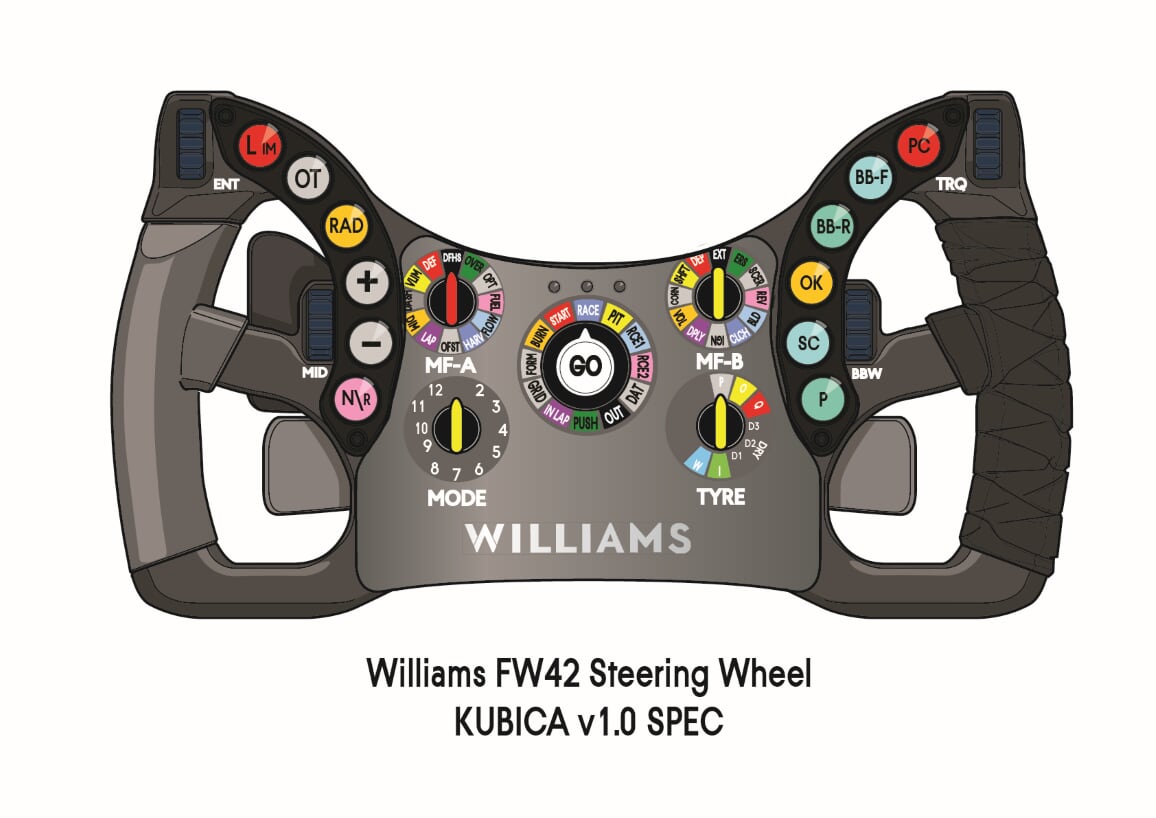
Since pre-season testing, Kubica has run a modified wheel, albeit based on the same chassis and electronics as Russell. This means the rotary and push button switches are all mounted in the same position, with different functions allocated to the buttons. The more frequently used functions are now on the left-hand side, with what’s left being placed on the right. Despite this, the rotary switches remain identical.
The right-hand grip is notably different for the Pole’s injured right arm because there is sport grip tape wound around the same inner rubber grip, to allow a better grasp with his weaker hand.
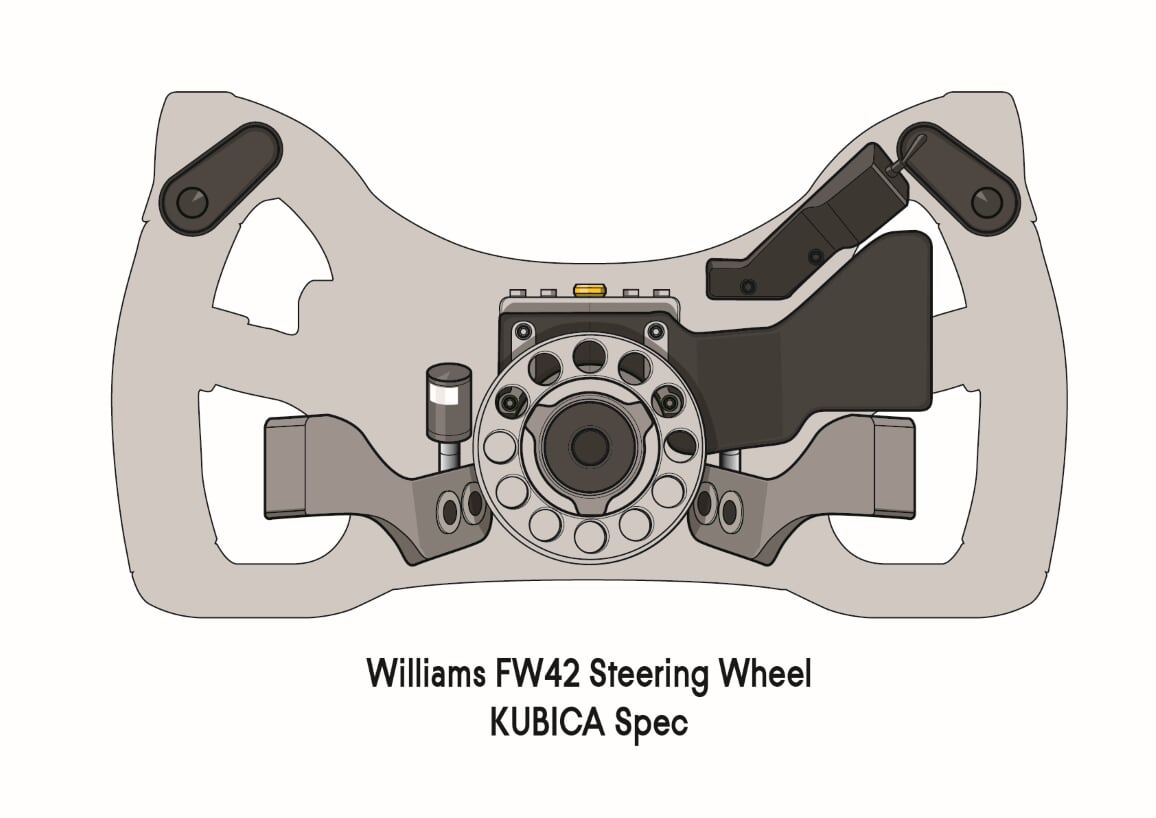
Behind the wheel, the changes are also obvious. The right-hand shift paddle is removed, so he can shift up or down with the just the left panel. Equally, the right-hand toggle switch pod is removed. Both clutch paddles are retained, even though only one can be used for the race start. Having two allows the driver to pull in the clutch quickly during a spin, to prevent the engine stalling.
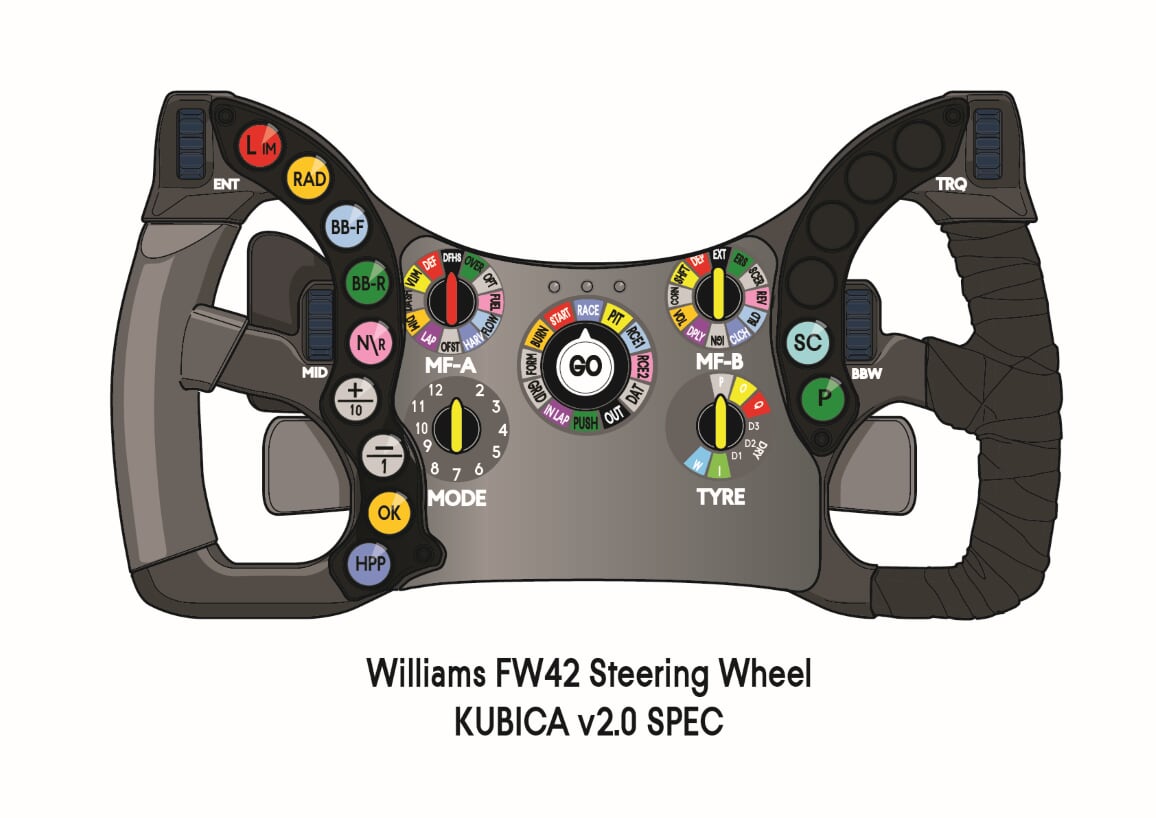
This Version 1.0 specification has served the driver well through the first part of the season, while an even more bespoke wheel was developed for its debut in Monza. For this version, the wheel is modified in shape, requiring changes to the moulds to lay the carbon fibre material into. The most obvious change are the switch positions, with most of the buttons are now around the left-hand side of the wheel. These three extra left-hand buttons are mounted to an extend 3D printed panel, which required a change to the removable panel’s shape to provide the extra space. Again, the rotaries are the same as Russell’s and are not altered with this V2.0 spec.
Less obvious is the change the right-hand grip, and there are two key changes. Firstly, the rubber grip is not fitted, so the grip tape is applied directly to the carbon fibre wheel rim. This creates a smaller diameter grip, again making it easier for the driver to hold. Also different on this side is a reposition spoke, which is now angled downwards rather than upwards as on the left. This may be to give the driver a better grip of the wheel with his right thumb.
Conclusion
Williams has a reputation for being one of the most innovative teams in the history of Formula One, but the car is nothing without the driver. For Kubica to have gone through life-changing injuries and still to be able to compete at the top table of motorsport is a huge credit to the driver himself. And credit too goes to Williams, to allow fans of the sport one more glimpse of a much-loved driver.
🗣️ #RK88: "I would like to thank the team for the last two years and for helping make my comeback to the @F1 grid possible. I have enjoyed my time with ROKiT Williams Racing…but I feel that the time is now right for me to move on to the next chapter in my career.” pic.twitter.com/D7KdDovSFw
— ROKiT WILLIAMS RACING (@WilliamsRacing) September 19, 2019

